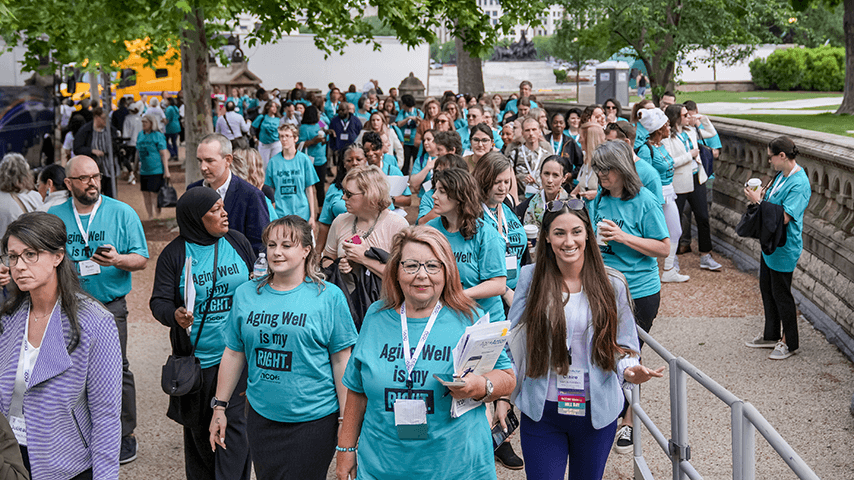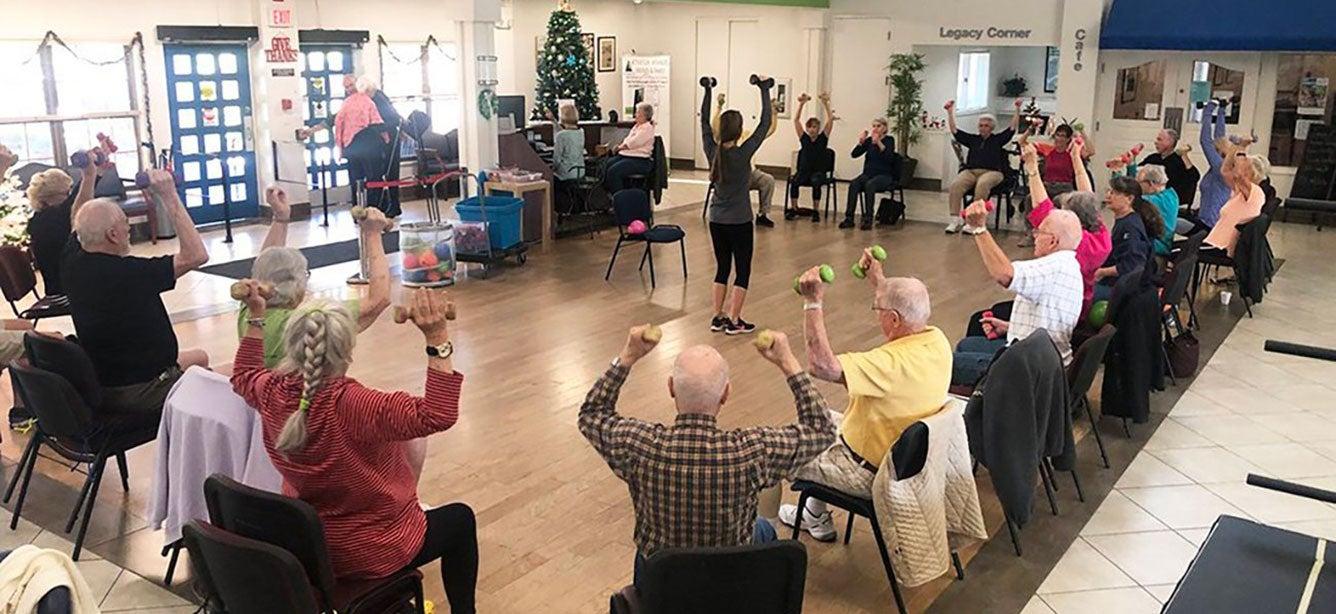Fiscal Year 2025 Aging Services Funding: Sharp Contrast Between Senate and House Proposals
5 min read

Related Topics
Despite over a decade of underfunding of federal programs that assist and empower individuals and their communities, the debate over annual appropriations is once again focused on austerity. In contrast to the House cuts in many programs older adults rely on, Senate appropriators are maintaining funding at current levels, or proposing a few increases.
What’s included in the Senate Appropriations Committee funding bills?
The population of older adults continue to grow, with 11,000 Americans turning 65 every day. Many federal programs are important supports that enable us to age with health, financial security, and independence.
Cuts in these investments, or even level funding, in the context of increased demand for and cost of providing services, mean the Aging Services Network will continue to be asked to do more with less.
Learn more about the history of federal investment in our Aging Services Funding Table.
How Senate proposals contrast with the House
Older Americans Act initiatives
- Congregate and Home-Delivered Nutrition Programs: The Senate level-funds the two core OAA nutrition programs while the House proposes a $37 million cut. Last year an estimated 55.6 million meals were served in group settings and 206.2 million meals were delivered to homes. Yet 4 out of 5 older adults who would benefit cannot access the nutrition programs, and many providers have waiting lists.
- Senior Community Service Employment Program (SCSEP): The Senate level-funds the Senior Community Services Employment Program while the House proposes to eliminate it for the second year in a row. SCSEP is the only federal program that provides job training and placement for low-income older workers aged 55 and older. The program helps an average of 40,000 older workers each year, but significantly less than one percent of those who qualify can be served.
- Caregiver Support: The Senate increases the National Family Caregiver Support Program (NFCSP) by $2 million while the House level-funds it. As of 2020, more than 53 million family caregivers provided the long-term supports and services that enabled those with chronic or other health conditions, disabilities or functional limitations to live in their own homes and communities. The estimated $600 billion value of this care in 2021 is more than the out-of-pocket spending on health care that year.
- Direct Care Workforce strategies: The Senate maintains the investment in the Direct Care Workforce Strategies Center while the House eliminates it. This is the only federal center that provides critical training and resources to address the dire shortage of workers who help older adults stay independent, in their homes and avoid placement in nursing homes or other facilities. Nearly three-quarters of direct care service providers are turning away new referrals, more than half have cut services, and all experience high turnover – averaging nearly 44 percent across states.
- Adult Protective Services grants: The Senate preserves funding for Adult Protective Services (APS) grants while the House eliminates it. This is the federal funding specifically targeted to APS state and local interventions in elder abuse, neglect, and exploitation. This remains a silent crisis, with at least one in five older adults experiencing abuse, but as few as one in 24 cases being reported.
- White House Conference on Aging: Neither chamber has included the Administration’s request for $2.5 million to support the decennial White House Conference on Aging (anticipated for 2025), which is crucial for mobilizing the public and private sectors to address the opportunities and challenges of our aging population.
Falls prevention
- Centers for Disease Prevention and Control (CDC) falls prevention: The Senate level-funds the CDC’s senior falls prevention program while the House eliminates it along with the entire Injury and Violence Prevention Center. CDC leads efforts to develop effective tools for doctors and health care providers to educate older adults on falls prevention. Falls are the number one cause of injuries and deaths from injuries among older adults and the nation is spending $80 billion to treat fall injuries annually, 71% of which is paid for by Medicare and Medicaid.1
- Housing and Urban Development Department (HUD) Aging in Place falls prevention home modification grants: The Senate proposes a $10 million increase for the HUD home modification grant program while the House proposes elimination. These grants support projects to help low-income older adults to remain in their homes through low-cost, low barrier, high impact home modifications to reduce risk of falling, improve general safety, increase accessibility, and to improve their functional abilities in their home.
Social Security Administration (SSA) operating budget: The Senate provides a $509 million increase, in contrast to the House $453 million cut, which would bring the agency’s workforce to the lowest level in 50 years. With these cuts, Social Security field offices would close or reduce hours. Additionally, it would take even longer to get new or replacement Social Security cards, and employers would have to wait longer to verify new employees’ information.
What’s next for FY25 appropriations?
With Congress in recess until Sept. 9, and only three weeks in September of a legislative session before another recess through the November election, there’s little time to finalize the 12 appropriations bills before FY25 starts on Oct. 1.
As in recent years, expect that a continuing resolution (CR) to be passed next month to keep the government open and running with level funding. It will likely run until December, which means final FY25 investment decisions will need to be made along with other important legislative actions during the post-election lame duck session. The result of the elections will have a significant influence on how and when Congress finishes its work.
What you can do
Use our form to email your representatives and senators about needed investments in aging services, including specific requests for falls prevention, Chronic Disease Self-Management Education, SCSEP, and Medicare SHIP.
When your elected officials are back home during the August recess, use NCOA advocacy basics tips and tools, including our 'effective advocacy at home' resources to take advantage of any in-person opportunities to urge investment in the services and benefits older adults rely upon.




